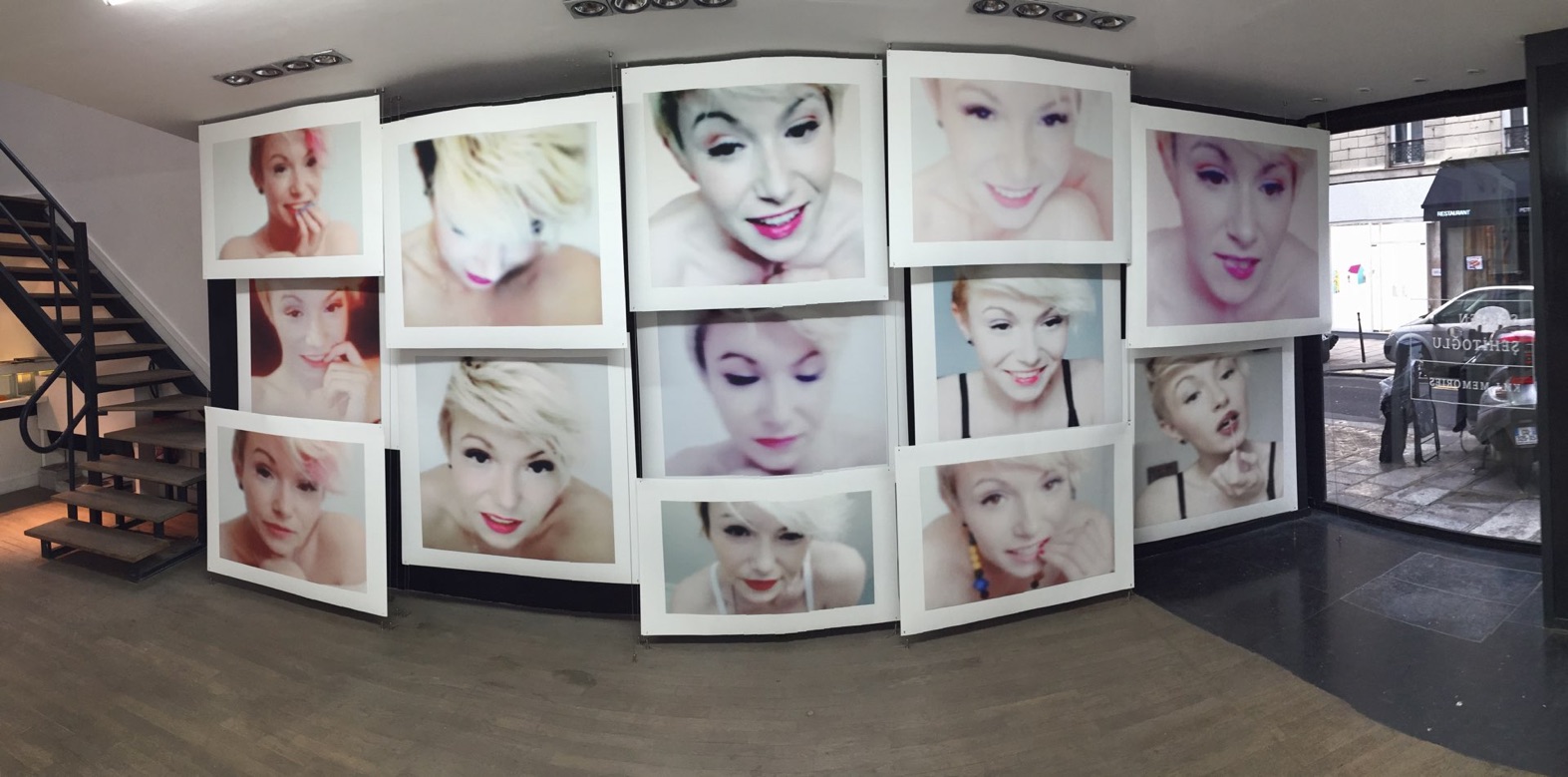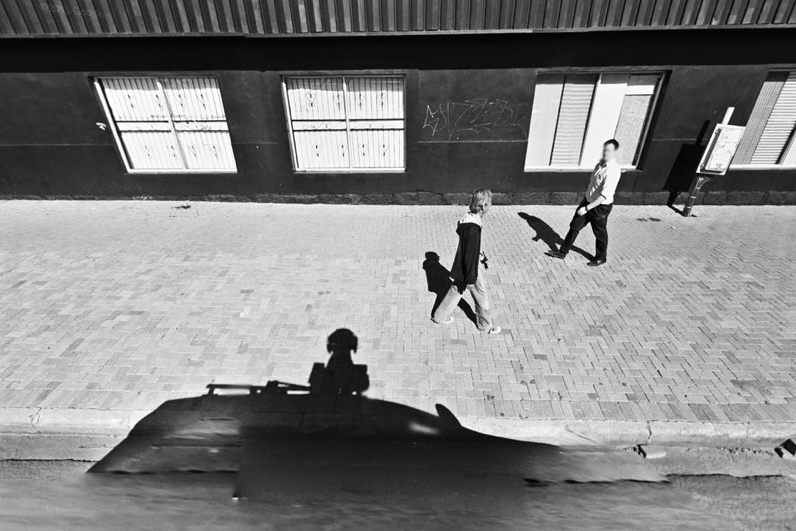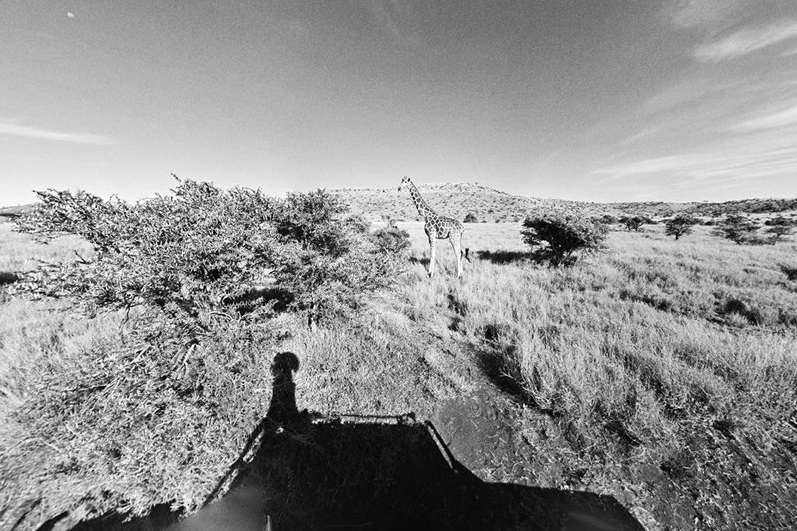Kill Memories is not only a digital experimentation of practicing art through found objects, it is also a book that is based on solid questions, a book that is really appealing in its richness in terms of its method, aesthetic and content.
In the evening of the 4th of May 2016, Wednesday, there was the book launch of Sergen Şehitoğlu's "Kill Memories" which was also exhibited previously in Karaköy FiLBooks. Along with Kill Memories, there are also Sergen Şehitoğlu's 2 works in the book. Moreover, there is a detailed interview arranged by Nilüfer Şaşmazer who is the editor of the book. If we are to set aside the interview, the book can be read in 3 phases.
In the first phase, what lends the book its name is portraits of a woman who has the nickname "Kill Memories" and doing online video shows. The second phase consists of "street photos" from Google Street View (GSV) in which the eyes are directed from indoors to outdoors, in fact which is viewed in less awareness. And at the end, Mt. Paektu as the epilogue.
Therefore, it is possible to consider the book from various angles. We can just start with an examination scale from the individual and a closed space, slowly going down the street and getting opened to some public space, and at the end, a point in which we can see some "trace" where the individual is just erased. I care about this aspect of scale, for it helps us to do some projection on the concept of privacy, violation of privacy or direct or indirect contacts with fields of privacy which fall into the main axis of the work. This perception of scale, maybe doesn't present some claim about setting any dimensions on the relationship of the society with the perception of privacy setting off from some violation in question or from some individual, encourages us to ask more questions where we think we have clear answers.
Sergen Şehitoğlu begins with the exhibition "Kill Memories" with the same name as the book. When we analyze this part, we are faced with disclosure instead of violation. Internet which is one of the most powerful media today, abruptly removes all curtains and reveals what is invisible: The woman who performs, body and nudity, the notions which are considered maybe as the most private of social norms and possibly the fact that the woman earns her living through it. Actually, here, the level of privacy supposedly violated is simpler than we think because it can only be viewed within the specific time and place the woman allows. And this knowledge brings with it another question: is it possible to talk about the privacy of a specific sphere when the person reveals the spheres which are considered private under normal conditions on purpose, of one's own choice and probably in control of? Or to put it in another way: can we talk about a different impression from an exhibition space or a shop window? Because we can only see to the extent we are allowed and because we are only visitors to the point we are allowed, our conception of privacy is disrupted. And it indicates another private area the viewers are not familiar with. Even if not our conception of privacy, the boundaries of what private is, shift.

Today, people are living through their social media identities, which have become means to identification and in fact, have moved ahead of identification cards or IDs given by the states. Many people unawares of cards they carry in their wallets and not considering them as indicators of their existence, will feel exposed and at a loss if their online social media identities are suspended only for an instant. As for the means social media offers, they enable people's most private moments displayed to the whole world without them being conscious of it, without allowing them to question the limits or definition of privacy. So, the webcam show in "Kill Memories" tears down the initial learned meaning of privacy as defined in holy scriptures and indicated through veiling/covering. On the other hand, if we look closer, we discover a completely different sphere of privacy captured by Sergen Şehitoğlu. These are readable traces even if not so distinct and they indicate the existence of that sphere. Especially the fact that Şehitoğlu watched these kinds of shows for a long time, implies a familiarity which becomes unconscious at some point and a one-sided acquaintanceship even if he never involved in an interaction. So, more than a year can be more than sufficient for one to read reflexively the mimics, mood swings of the other. It is possible to observe a similar effect we see in portraits which are found recurrently in the history of photography, indicating the power of portrait photography, those stories engraved in the faces of people. In this manner, the privacy we get becomes different from the one we think we get. Therefore, we can see that the photographs are not only taken by an unbiased observer or through a medium recording random moments, but are readable through the obscure limits of privacy even barely.

The second part, consists of selected photographs taken by nine cameras of Google Street View (GSV) from various countries. Here, we can ask a question which occurs to one upon seeing the first part and becomes prominent outside of the notion of privacy: what is the limits to the means for artistic production? And this question points at the outlines of a bigger picture. For especially the GSV work, can be read as an experiment on street photography without a camera and builds on Sergen Şehitoğlu's selection. There, we don't see an artist capturing images in physical terms; but one incorporating a consciousness and reproducing the image which is somehow acquired through a mechanical deed and with different means at a distance. I guess, here I can use the analogy between someone presenting some raw material and another creating a new entity through it. Even though today this new medium has a wide range of possibilities, it is also a slippery and disadvantaged ground. Therefore, the use of this new media as a tool, will be discussed more as it is utilized. However, I can personally say I find this book a successful example of the method.

If we are to return to the original framework which is hard to analyze and opening up lots of questions, in other words if we are to return to the notion of privacy, it is easy to see clearly how blurred the boundaries become through the use of GSV. For the images here look as spontaneous as if they are taken by some street photographer and they are captured in a public space where street photographers work. However, what is distinctive here is that GSV functions as a data logger beyond documentation. It is hard not to feel that the objective for collecting data, even if it's not the real purpose, (maybe it will be a serious accusation) gives way to some kind of an act of peeping. In public space, where boundaries of privacy is more ambiguous, one can witness a kind of disclosure even it's not a full violation. 9 cameras functioning with the precision of a security camera, records the most marginal places step-by-step in a city in some country. Here, it may come in handy to remember John Berger's argument that a photograph, even if it doesn't clarify the importance of its content, it constitutes an irrefutable evidence. During this data collection process, even if what is recorded involves a significant violation or the importance of the content is disputable, it is a proof that the event or the object is there.
The last part of the book which completes the narrative and puts an end to it in graphic terms, is Mt. Paektu. This work consisting of a two-piece photograph, with its calmness and inertia reminds us in the end of a completely different subject: we are monitored. We are recorded every day, through different tools, in various scales, in various times and places. This is truth whether we live in a global country like China which has become one of the biggest capitalist powers, or North Korea isolated from the world, considered completely as some mystery. We are living in a period in which the situation we used to ridicule in the 90's in Hollywood spy movies full of conspiracy theories, where military satellites show our wristwatches in perfect clarity, has become possible even solely through commercial satellites, may not be that extreme (and we don't have the means to test if it's real or not). Today, our privacy turns into a question mark as big as Mt. Paektu and that grand eye at the end, reminds us that we are monitored constantly.
Note: GSV photography series is still online at https://www.instagram.com/gsv_killmemories/
*The image above is taken from the event "Kill Memories Book Launch" in FiLBooks.